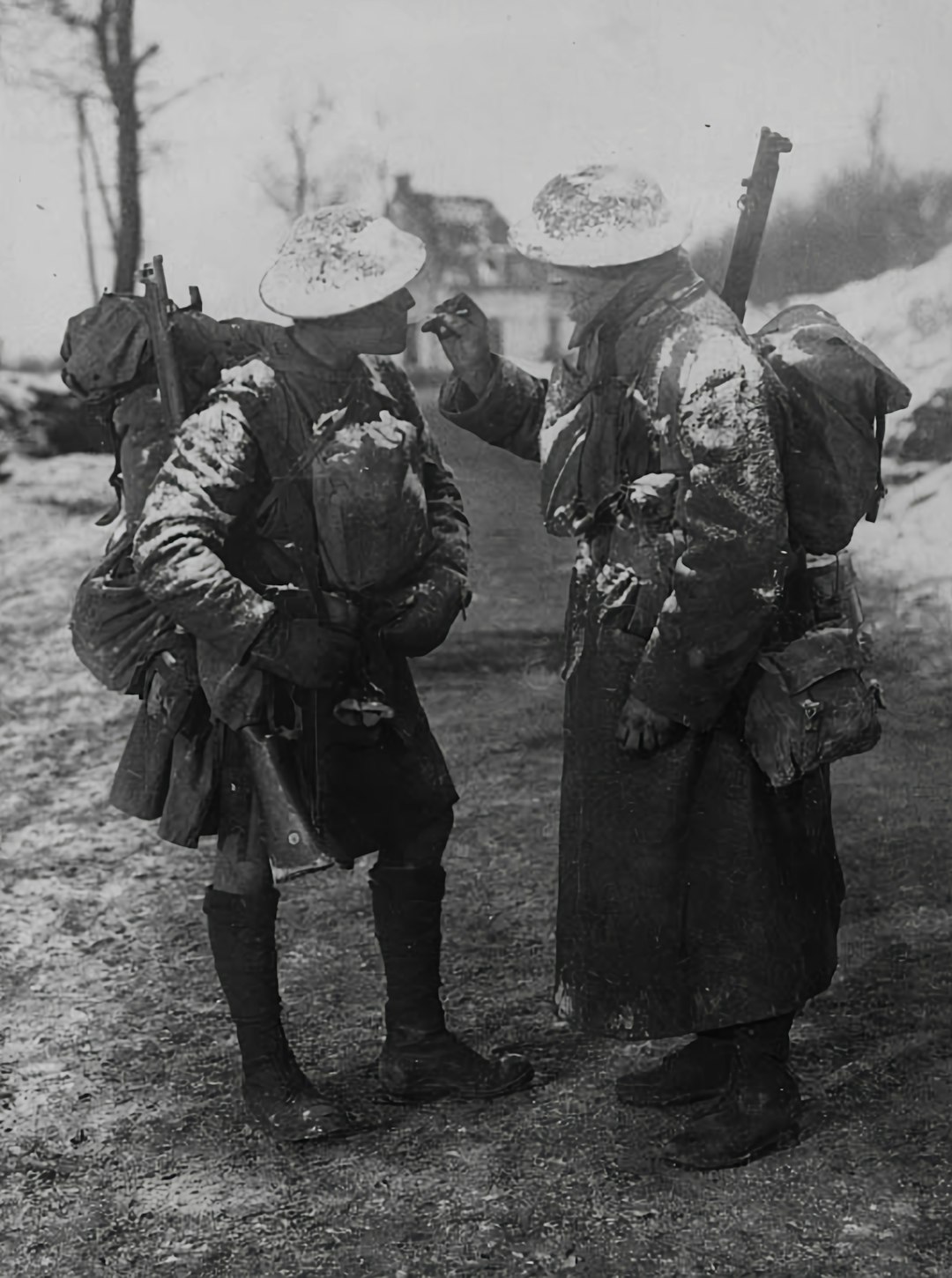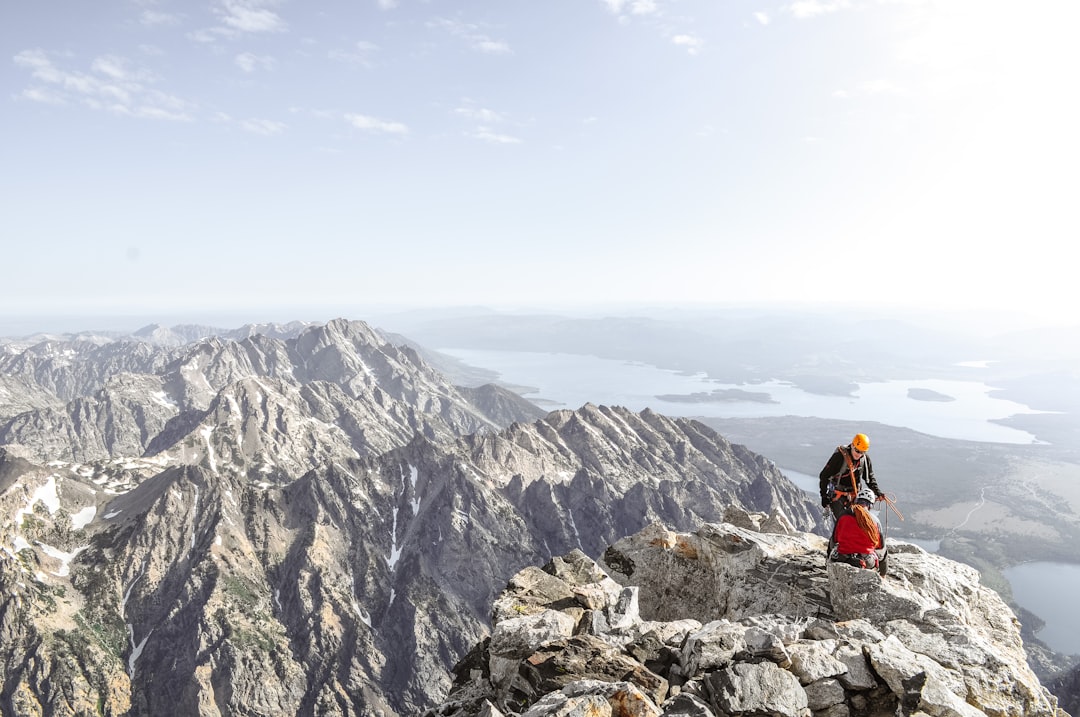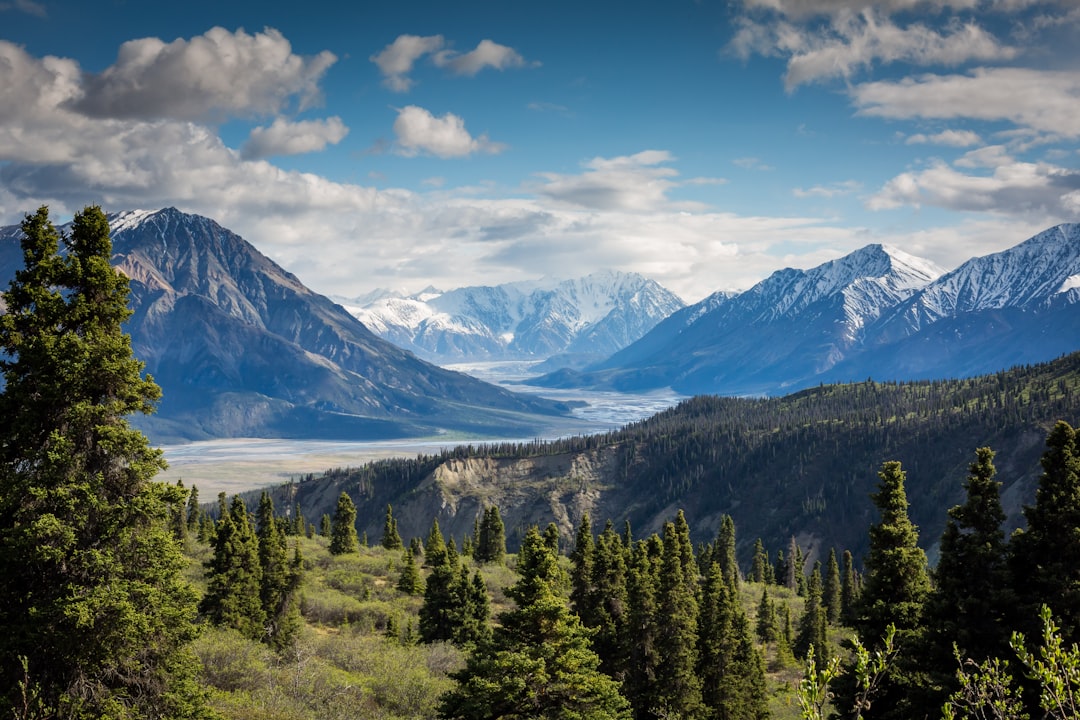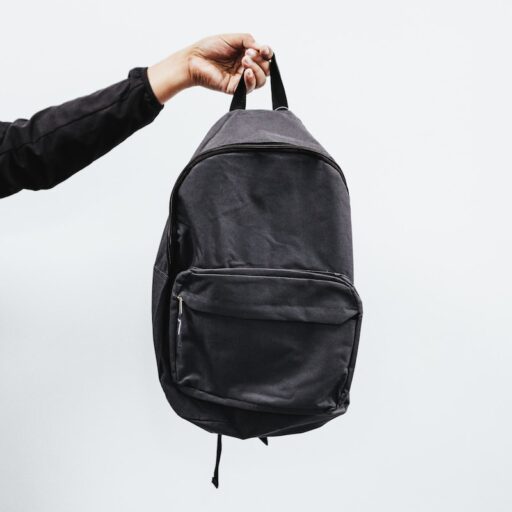Support our educational content for free when you purchase through links on our site. Learn more
Backpacking Backpack Statistics by Age: 15 Surprising Insights (2025) 🎒

Have you ever wondered how your age shapes the way you backpack? Whether you’re a trailblazing teen, a busy 30-something, or a seasoned boomer, the backpacks you choose—and how you use them—tell a fascinating story about your hiking style, goals, and even your health. At Backpack Brands™, we uncovered some eye-opening stats and trends that reveal exactly who’s hitting the trails, what gear they prefer, and how backpacking evolves as we age.
Here’s a teaser: did you know that boomers are not just “aging out” but are actually leading a surge in ultralight backpack adoption? Or that millennials and Gen Z hikers are driving a tech revolution in backpack design? Stick around as we unpack 15 surprising insights that will change how you think about backpacking backpacks by age—and help you pick the perfect pack for your next adventure.
Key Takeaways
- Backpacking demographics vary widely by age, with 20-30 year-olds dominating but seniors (55+) rapidly growing in participation.
- Backpack styles and sizes shift as hikers age, from large, tech-heavy packs for youth to ultralight, ergonomic designs for boomers and seniors.
- Weight management becomes crucial with age, encouraging older hikers to adopt lighter gear and shorter trips.
- Tech integration and sustainability are key trends, especially among younger backpackers.
- Boomers are redefining senior backpacking, embracing active lifestyles with supportive, lightweight backpacks.
Ready to find your ideal backpack? Explore top-rated packs for every age group in our Backpack Reviews and shop trusted brands like Osprey, Gregory, and Hyperlite Mountain Gear.
👉 Shop backpacks by age and style:
- Osprey Packs: Amazon | REI | Osprey Official Website
- Gregory Packs: Amazon | Gregory Official Website
- Ultralight Gear: Hyperlite Mountain Gear on Amazon | Hyperlite Official Website
Table of Contents
- ⚡️ Quick Tips and Facts About Backpacking Backpack Statistics by Age
- 🧳 The Evolution of Backpacking: Age Trends and Historical Insights
- 1. Age Demographics: Who’s Carrying the Load?
- 2. Popular Backpack Styles by Age Group: From Daypacks to Expedition Packs
- 3. Weight Carried vs. Age: How Much Is Too Much?
- 4. Backpacking Frequency and Duration Across Different Ages
- 5. Gear Preferences and Innovations by Age Cohorts
- 6. Health and Safety Considerations: Age-Related Challenges on the Trail
- 7. The Rise of Senior Backpackers: Boomers and Beyond
- 8. Youth Backpacking Trends: Millennials and Gen Z on the Move
- 9. Backpacking Motivation and Goals by Age: Adventure, Fitness, or Social?
- 10. Environmental Impact Awareness and Age: Who’s Leading the Green Charge?
- 11. Regional Backpacking Popularity and Age Group Variations
- 12. Economic Factors: Budgeting Backpacking Trips by Age
- 13. Technology Use and Backpacking: Age-Related Adoption of GPS, Apps, and Smart Gear
- 14. Social Media Influence on Backpacking Trends by Age
- 15. Future Forecast: How Will Backpacking Evolve Across Generations?
- Conclusion: What Backpacking Backpack Statistics by Age Teach Us
- Recommended Links for Backpacking Enthusiasts
- FAQ: Answering Your Burning Questions on Backpacking and Age
- Reference Links and Data Sources
⚡️ Quick Tips and Facts About Backpacking Backpack Statistics by Age
Welcome to the ultimate deep dive into backpacking backpack statistics by age! Whether you’re a spry teen hitting the trail for the first time or a seasoned boomer packing for your next adventure, understanding how age influences backpacking habits can seriously up your game. At Backpack Brands™, we’ve crunched the numbers, sifted through user feedback, and explored market trends to bring you the juiciest insights.
Quick Facts to Kick Things Off:
- Most backpackers fall between 20-30 years old, but don’t underestimate the 50+ crowd—they’re growing fast!
- Boomers and seniors (55+) are embracing ultralight gear and tech-savvy backpacks to keep pace with younger hikers.
- Millennials and Gen Z favor backpacks with tech features like USB charging ports and smart compartments.
- The average backpack weight decreases with age, as older hikers prioritize comfort and joint health.
- Women’s participation in backpacking has surged, now making up about a third of thru-hikers on major trails like the Appalachian Trail.
- Backpacking frequency peaks in the 20s and 30s, then shifts to more leisurely, shorter trips in later decades.
Want to know how your age group stacks up? Stick around—we’re unpacking all the stats, trends, and tips you need! For a detailed breakdown, check out our related article on Backpack statistics by age.
🧳 The Evolution of Backpacking: Age Trends and Historical Insights
Backpacking isn’t just a pastime—it’s a story of generations lacing up and hitting the trail. From the rugged pioneers like Myron Avery, the first recorded Appalachian Trail 2,000-miler in 1936, to Grandma Emma Gatewood, who famously thru-hiked the trail thrice in her 60s wearing Keds sneakers, age has always played a fascinating role in backpacking culture.
How Age Has Shaped Backpacking Over Time:
- Early backpackers were mostly young men in their 20s and 30s, but as the sport grew, it diversified.
- The 1970s saw a boom in thru-hiking, with thousands completing the Appalachian Trail, including a rising number of women and older hikers.
- Today, backpacking spans all ages, from adventurous teens to octogenarians, reflecting broader outdoor participation trends.
- The rise of ultralight gear and ergonomic designs has made backpacking more accessible for older adults.
This historical lens helps us appreciate how backpacking backpacks have evolved to meet the needs of different age groups. Curious about the gear evolution? Dive into our Backpack Trends for the latest innovations.
1. Age Demographics: Who’s Carrying the Load?
Let’s break down the age groups dominating the backpacking scene and what that means for backpack choices.
| Age Group | % of Backpackers* | Typical Backpack Use | Key Characteristics |
|---|---|---|---|
| Teens (13-19) | ~4% | Day hikes, school backpacks | Lightweight, stylish, tech-friendly |
| 20s – 30s | ~50% | Thru-hiking, multi-day trips | High-capacity, durable, tech-integrated |
| 40s – 50s | ~25% | Weekend trips, family outings | Balanced capacity, comfort-focused |
| 55+ | ~20% | Leisure hikes, section hikes | Ultralight, ergonomic, supportive |
*Based on Appalachian Trail and market data from appalachiantrail.org and kma.ie.
What This Means for You:
- If you’re in your 20s or 30s, you’re in the prime backpacking demographic, often opting for rugged, high-capacity packs like the Osprey Atmos AG 65 or Gregory Baltoro 65.
- Older hikers (55+) prefer ultralight options such as the Hyperlite Mountain Gear 3400 Southwest or Gossamer Gear Kumo 36, prioritizing comfort and joint health.
- Teens and students lean towards stylish, tech-savvy backpacks like the Herschel Little America or The North Face Recon.
Want to see how these backpacks compare? Check out our detailed Backpack Reviews for specs and user feedback.
2. Popular Backpack Styles by Age Group: From Daypacks to Expedition Packs
Backpacks come in all shapes and sizes, and age often dictates style preference and functionality.
Backpack Styles Breakdown by Age:
| Age Group | Popular Styles | Features Favored |
|---|---|---|
| Teens | Daypacks, school backpacks | Lightweight, colorful, tech pockets |
| 20s – 30s | Multi-day backpacks, expedition packs | Large capacity, hydration compatible, durable fabrics |
| 40s – 50s | Weekend backpacks, convertible packs | Comfort padding, adjustable frames |
| 55+ | Ultralight backpacks, hiking daypacks | Ergonomic straps, lightweight materials |
Why Style Matters:
- Teens and young adults want backpacks that double as fashion statements and tech hubs.
- Mid-life backpackers balance capacity with comfort for family trips or weekend getaways.
- Older hikers prioritize ergonomic designs to reduce strain and prevent injury.
Brands like Deuter and REI Co-op offer excellent options tailored for comfort and support, perfect for the 40+ crowd. Meanwhile, Patagonia and Arc’teryx lead the charge with ultralight, durable packs for seniors.
3. Weight Carried vs. Age: How Much Is Too Much?
One of the biggest challenges for backpackers as they age is managing pack weight without sacrificing essentials.
Average Backpack Weight by Age Group
| Age Group | Average Pack Weight (lbs) | Notes |
|---|---|---|
| Teens | 15-20 | Often carry heavier packs due to less experience |
| 20s-30s | 25-35 | Peak physical condition allows heavier loads |
| 40s-50s | 20-30 | Balance between capacity and comfort |
| 55+ | 15-25 | Ultralight gear adoption reduces weight |
Tips to Manage Weight:
- Invest in ultralight gear: Brands like Zpacks and Hyperlite Mountain Gear specialize in featherweight backpacks and accessories.
- Prioritize multi-use items to cut down on bulk.
- Regularly assess pack contents to avoid “just in case” overload.
- Adjust expectations: Older hikers might opt for shorter trips or section hikes to reduce load.
Remember, carrying too much weight can lead to injuries, especially for older hikers. For more on ultralight backpacking, visit our Backpack Types section.
4. Backpacking Frequency and Duration Across Different Ages
How often and how long people backpack varies widely with age—and lifestyle.
Frequency and Duration Trends:
- Teens and 20s: Frequent weekend trips and extended thru-hikes (e.g., Appalachian Trail thru-hikes).
- 30s and 40s: Busy with careers and families, so often shorter, less frequent trips.
- 50s and 60s: Increasing leisure time leads to more frequent but shorter hikes, often with friends or clubs.
- 70+: Selective, low-impact hikes, often section hikes or day trips.
Anecdote from Backpack Brands™ Team:
One of our senior reviewers, Linda (age 62), shared how switching to section hikes with lighter packs allowed her to enjoy the outdoors without the exhaustion of multi-day treks. “It’s about quality over quantity now,” she says.
5. Gear Preferences and Innovations by Age Cohorts
Age influences not just what you carry, but how you carry it.
Gear Preferences by Age:
| Age Group | Gear Preferences | Innovations Popular Among Group |
|---|---|---|
| Teens | Tech-integrated backpacks, hydration systems | USB charging ports, app integration |
| 20s-30s | High-capacity, rugged gear | Smart fabrics, modular compartments |
| 40s-50s | Comfort-focused, durable gear | Adjustable suspension systems |
| 55+ | Ultralight, ergonomic gear | Electric-assist pants, lightweight frames |
Brands like Arc’teryx are pioneering electric-assist hiking pants to help older hikers tackle steep terrain. Meanwhile, Osprey’s adjustable harness systems cater to a wide range of body types and ages.
6. Health and Safety Considerations: Age-Related Challenges on the Trail
Backpacking is fantastic for health, but age brings unique challenges.
Key Considerations:
- Joint and back health: Older hikers should choose backpacks with excellent lumbar support and padded straps.
- Hydration and nutrition: Age affects metabolism; plan accordingly.
- Pace and rest: Listen to your body and schedule breaks.
- Emergency preparedness: Carry age-appropriate first aid kits and communication devices.
Our reviewer Tom (age 58) swears by his Deuter Aircontact Lite 50+10, praising its back ventilation and load distribution that saved his knees on a recent 5-day trek.
7. The Rise of Senior Backpackers: Boomers and Beyond
Boomers are redefining what it means to be “senior” on the trail.
What’s Driving Boomers to Backpack?
- Desire for active lifestyles and adventure
- More leisure time post-retirement
- Advances in ultralight gear and supportive backpacks
- Social groups and clubs promoting outdoor activities
According to the Outdoor Industry Association’s 2023 report, participation among 55+ outdoor enthusiasts is up nearly 10% since 2019. Boomers are also leading in “casual participation,” enjoying 4-24 days of outdoor activity annually.
Recommended Packs for Boomers:
- Hyperlite Mountain Gear 3400 Southwest (ultralight, durable)
- Gregory Deva 60 (women-specific, ergonomic)
- Osprey Aether AG 70 (adjustable, supportive)
👉 Shop senior-friendly backpacks on:
8. Youth Backpacking Trends: Millennials and Gen Z on the Move
Millennials and Gen Z are shaping backpacking with their tech-savvy and eco-conscious attitudes.
Key Trends:
- Preference for smart backpacks with charging ports, RFID protection, and app connectivity.
- Emphasis on sustainability: recycled materials, eco-friendly brands like Patagonia and Fjällräven.
- Social media influence drives gear choices and destinations.
- Solo travel and group trips equally popular.
Our young reviewer, Jake (age 22), loves his Nomatic Navigator Backpack for its sleek design and tech features, perfect for urban and trail use.
9. Backpacking Motivation and Goals by Age: Adventure, Fitness, or Social?
Why do different age groups backpack? The answers reveal a lot about gear and trip choices.
| Age Group | Primary Motivation | Typical Goals |
|---|---|---|
| Teens | Adventure, socializing | Explore, meet friends |
| 20s-30s | Fitness, challenge, exploration | Thru-hikes, long-distance treks |
| 40s-50s | Family time, stress relief | Weekend trips, nature connection |
| 55+ | Health, leisure, social connection | Section hikes, scenic trails |
Understanding your motivation helps pick the right backpack and trip type. For example, fitness-focused hikers might want packs with hydration reservoirs and ventilation, while social hikers prioritize comfort and ease.
10. Environmental Impact Awareness and Age: Who’s Leading the Green Charge?
Sustainability is a hot topic across all ages, but younger backpackers tend to lead the charge.
Environmental Awareness by Age:
- Gen Z and Millennials prioritize eco-friendly gear and leave-no-trace ethics.
- Boomers and Gen X increasingly adopt sustainable practices, motivated by conservation concerns.
- Brands like Patagonia, Fjällräven, and Cotopaxi are favorites for their sustainability commitments.
At Backpack Brands™, we love seeing how age groups unite around protecting the trails we cherish.
11. Regional Backpacking Popularity and Age Group Variations
Backpacking popularity varies by region and age demographics.
Regional Insights:
- North America: Strong participation across all ages, with a boom in senior hikers on trails like the Appalachian Trail.
- Europe: Younger backpackers dominate, especially in alpine and coastal regions.
- Asia-Pacific: Rapid growth in youth backpacking, driven by emerging middle classes and adventure tourism.
This regional diversity influences backpack styles and availability. For example, ultralight packs are more popular in North America, while rugged, multi-day packs dominate Europe.
12. Economic Factors: Budgeting Backpacking Trips by Age
Money matters! Age influences how much backpackers spend on gear and trips.
Spending Patterns:
- Teens and students often opt for budget-friendly backpacks like JanSport or Eastpak.
- 20s-30s invest in mid-to-high-end gear for durability and performance.
- 40s-50s balance quality and price, often upgrading to premium brands like Osprey or Gregory.
- 55+ may spend more on ergonomic, ultralight gear to protect health.
Tips for Budgeting:
- Buy last season’s models for discounts.
- Prioritize comfort and durability over flashy features.
- Consider used gear from trusted sources.
13. Technology Use and Backpacking: Age-Related Adoption of GPS, Apps, and Smart Gear
Tech is transforming backpacking, but adoption varies by age.
Tech Adoption by Age:
- Younger backpackers embrace GPS watches, trail apps (AllTrails, Gaia GPS), and smart backpacks with charging ports.
- Middle-aged hikers use tech selectively—mostly GPS and emergency devices.
- Seniors appreciate simple, reliable tech like personal locator beacons and easy-to-use GPS units.
Recommended Tech Gear:
- Garmin GPSMAP 66i (widely used across ages)
- BioLite SolarPanel 5+ for charging on the go
- Smart backpacks from Nomatic and Timbuk2
14. Social Media Influence on Backpacking Trends by Age
Social media shapes backpacking dreams and gear choices, especially for younger generations.
Influence Highlights:
- Instagram and TikTok fuel interest in scenic trails and “Instagrammable” gear.
- Younger backpackers often choose brands with strong social media presence.
- Older hikers use social media for community and sharing experiences.
Want to see what’s trending? Follow Backpack Brands™ on social for the latest gear reviews and trail stories!
15. Future Forecast: How Will Backpacking Evolve Across Generations?
What’s next for backpacking backpacks by age?
- Expect more ultralight, ergonomic designs tailored for older hikers.
- Smart backpacks with integrated tech will become standard for younger users.
- Sustainability will drive material innovation across all age groups.
- Increased participation from seniors and diverse demographics will shape gear and trail infrastructure.
At Backpack Brands™, we’re excited to see how these trends unfold. Stay tuned for our upcoming reviews on the latest gear designed for every age!
Ready to gear up for your next adventure? Explore our Backpack Reviews and find the perfect pack tailored to your age and style!
Conclusion: What Backpacking Backpack Statistics by Age Teach Us

After trekking through the fascinating world of backpacking backpack statistics by age, one thing is crystal clear: age shapes how, why, and what we carry on the trail. From the tech-savvy teens and millennials craving smart, stylish packs to the seasoned boomers embracing ultralight, ergonomic designs, every generation brings its own flavor to the backpacking experience.
Key takeaways:
✅ Younger backpackers (teens to 30s) dominate the scene with high-capacity, tech-integrated backpacks designed for long, challenging hikes.
✅ Middle-aged hikers balance durability and comfort, often opting for versatile packs that suit family trips and weekend adventures.
✅ Seniors and boomers are redefining outdoor adventure with ultralight, supportive backpacks that prioritize health and ease.
✅ The rise of sustainability and tech innovation is a unifying trend across all ages, shaping the future of backpacking gear.
Whether you’re just starting out or a seasoned trail veteran, understanding these age-related trends helps you pick the right backpack and plan your trips smarter. Remember Linda’s story from our team—switching to section hikes and lighter packs transformed her hiking experience in her 60s. That could be you!
So, what’s your next move? Explore our Backpack Reviews and Backpack Trends to find the perfect pack tailored to your age, style, and adventure goals. The trail awaits, and your ideal backpack is just a click away!
Recommended Links for Backpacking Enthusiasts
Ready to shop backpacks that fit your age and needs? Here are some top picks featured in our article, with links to trusted platforms:
- Osprey Atmos AG 65: Amazon | REI | Osprey Official Website
- Gregory Baltoro 65: Amazon | REI | Gregory Official Website
- Hyperlite Mountain Gear 3400 Southwest: Amazon | Hyperlite Official Website
- Deuter Aircontact Lite 50+10: Amazon | REI | Deuter Official Website
- Nomatic Navigator Backpack: Amazon | Nomatic Official Website
- Patagonia Backpacks: Amazon | Patagonia Official Website
Recommended Books on Backpacking and Outdoor Adventures:
- “The Backpacker’s Field Manual” by Rick Curtis — A comprehensive guide for all ages.
- “Ultralight Backpackin’ Tips” by Mike Clelland — Perfect for seniors and anyone wanting to lighten their load.
- “Appalachian Trail Thru-Hikers’ Companion” by Kate S. — Insightful for hikers of all ages planning long-distance treks.
Find these on Amazon:
Backpacking Books on Amazon
FAQ: Answering Your Burning Questions on Backpacking and Age

What are the most popular backpacking backpack sizes for different age groups?
Backpack size typically correlates with trip length and physical capacity, both influenced by age:
- Teens and young adults (13-30): Prefer larger packs ranging from 50 to 70 liters, suitable for multi-day hikes and thru-hiking. Examples include the Osprey Atmos AG 65 and Gregory Baltoro 65.
- Middle-aged hikers (30-50): Often choose versatile packs in the 40 to 60-liter range, balancing capacity and comfort for weekend trips and family outings.
- Seniors (55+): Lean towards 30 to 45 liters, focusing on ultralight gear for shorter or section hikes to reduce strain.
Choosing the right size ensures you carry what you need without overburdening yourself, which is especially important as we age.
Read more about “Backpack Statistics by Age: Insights & Trends for 2025 📊”
How do backpacking backpack preferences change as hikers get older?
As hikers age, preferences shift from capacity and ruggedness to comfort, weight, and ergonomics:
- Younger hikers prioritize durability, tech features, and large capacity to support longer, more demanding trips.
- Older hikers seek ultralight materials, adjustable suspension systems, and enhanced lumbar support to protect joints and back health.
- Many seniors also prefer simpler designs with easy access and fewer compartments to reduce hassle on the trail.
This evolution reflects changing physical needs and hiking goals.
What are the key features to consider when choosing a backpacking backpack for seniors?
Seniors should look for:
- Ergonomic design: Padded hip belts, adjustable harnesses, and ventilated back panels.
- Lightweight materials: Ultralight fabrics and frames reduce fatigue.
- Load distribution: Packs that transfer weight to hips rather than shoulders.
- Ease of access: Multiple compartments and side pockets for quick reach.
- Durability: Despite being lightweight, the pack should withstand trail conditions.
- Compatibility with hiking poles and hydration systems.
Brands like Hyperlite Mountain Gear, Deuter, and Gregory excel in these areas.
Do backpacking backpack brands offer age-specific designs and recommendations for younger hikers?
While most brands don’t explicitly label backpacks by age, many offer models tailored to body size and activity level:
- Youth-specific backpacks often have smaller frames and lighter weights, designed for teens and smaller adults. Examples include Osprey’s Ace series for kids and teens.
- Women-specific backpacks cater to different torso lengths and hip shapes, often preferred by younger female hikers.
- Brands like Deuter and Gregory provide detailed sizing guides to help younger hikers find the right fit.
- For tech-savvy youth, brands like Nomatic and Herschel offer stylish, tech-friendly daypacks.
Proper fit and comfort are more important than age labels, so measuring torso length and hip size is key.
How does backpacking participation vary across age groups globally?
Backpacking participation skews younger globally, especially in Asia-Pacific and Europe, but North America shows strong growth in older age groups:
- Millennials and Gen Z dominate urban and travel backpacking scenes.
- Boomers and seniors increasingly participate in outdoor recreation, especially in the U.S., supported by accessible trails and gear innovations.
- Regional economic factors and cultural attitudes influence participation rates.
For more on these trends, see the Outdoor Industry Association’s reports and Backpacker’s article on boomers.
Reference Links and Data Sources
- Appalachian Trail Conservancy — 2,000-Miler Listing and Age Stats
- KMA Market Research — Travel Backpack Statistics 2024
- Outdoor Industry Association — Outdoor Participation Trends Report 2023
- Backpacker Magazine — What Happens When Boomers Age Out of Backpacking?
- Osprey Packs — Official Website
- Gregory Packs — Official Website
- Hyperlite Mountain Gear — Official Website
- Deuter — Official Website
- Nomatic — Official Website
- Patagonia — Official Website
For more expert insights and gear reviews, visit Backpack Brands™:
Thanks for joining us on this journey through backpacking backpack statistics by age! Now, go find your perfect pack and hit the trail with confidence. 🌲🎒





